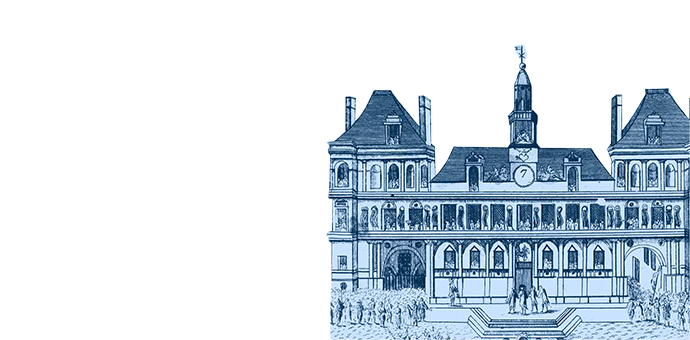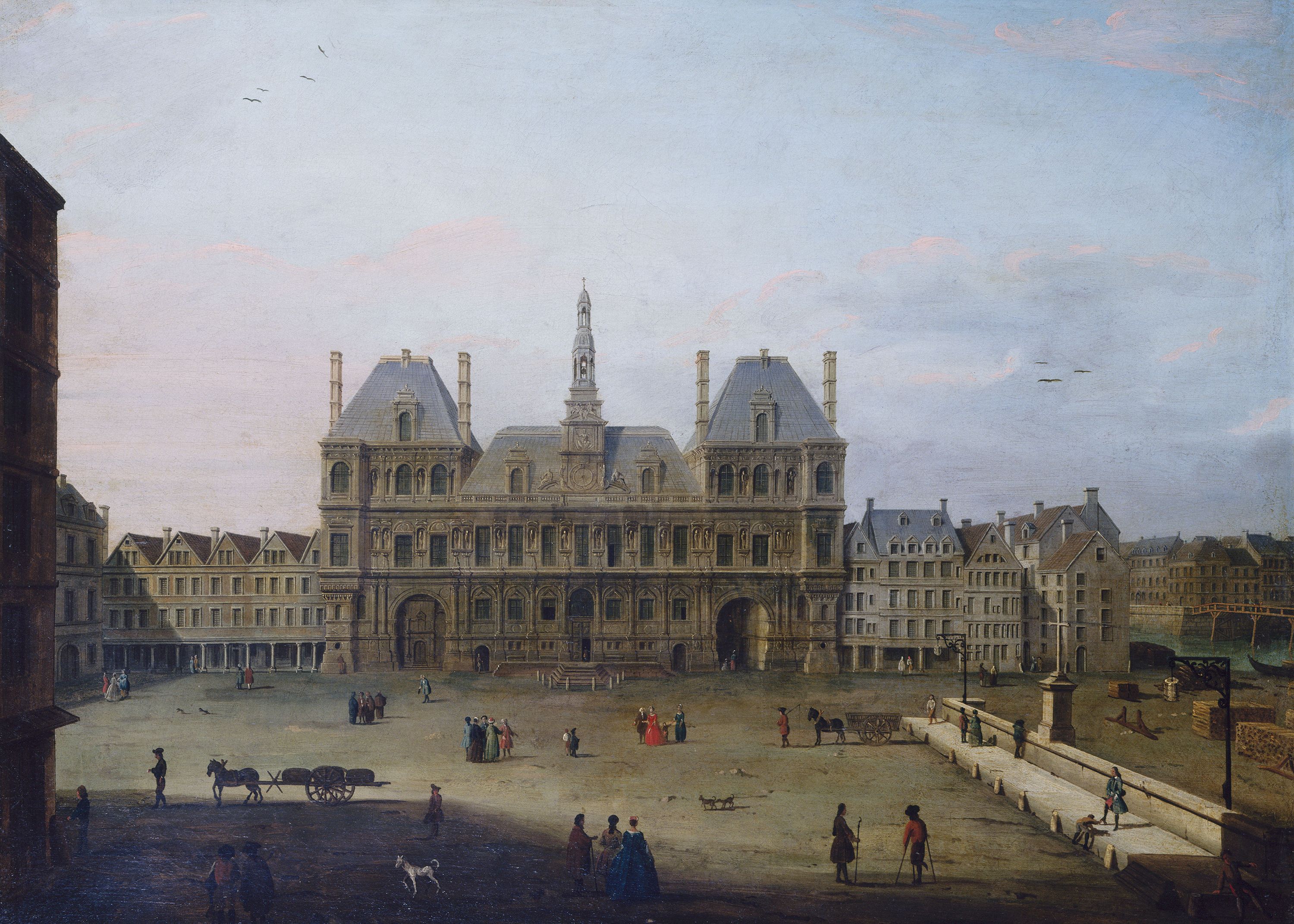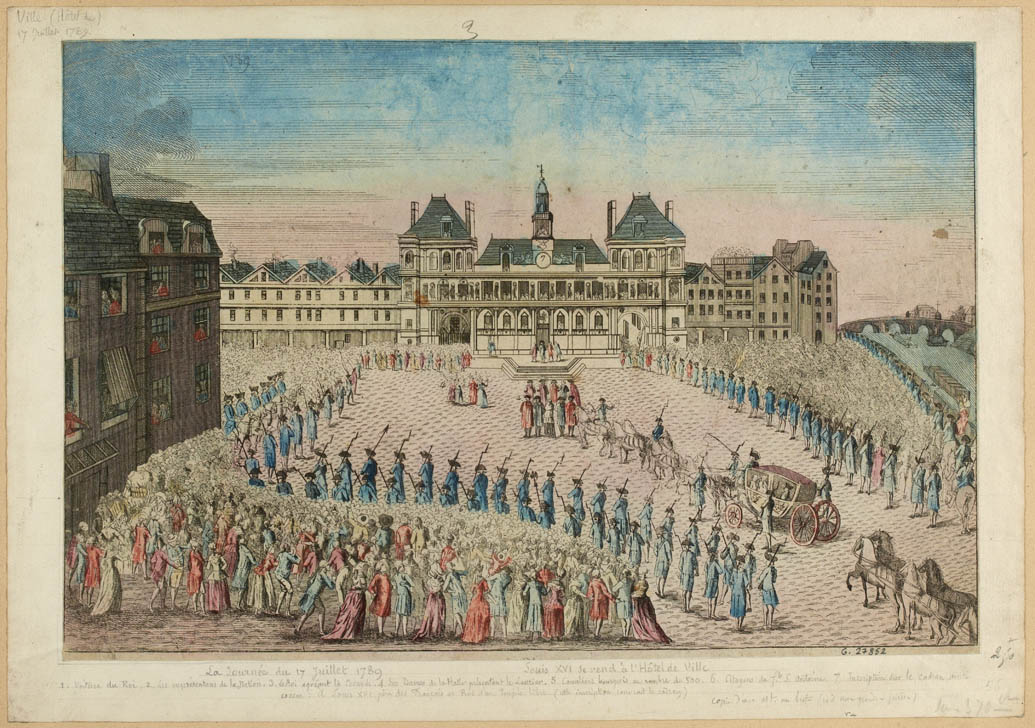The Hôtel de Ville and its neighborhood
In 1789, the Place de Grève, a square that reached all the way to the Seine, was located more or less where the current Hôtel de Ville stands today. The ambiance here was mainly working class: people came here to work, look for a job, as well as buy food to eat, participate in celebrations and even attend public executions. The current Hôtel de Ville did not exist in 1789: burned down by the insurgents of the Commune in 1871, the original building that existed during the Revolution was much smaller and dated from the Renaissance. Even if the neighborhood has transformed significantly, the neighboring streets still carry many traces of the French Revolution, from the Grand Châtelet to the Saint-Gervais church by way of the Hôtel-Dieu and the Saint-Jacques tower.

 Chronology
Chronology
-
July 15, 1789
Jean-Sylvain Bailly is hailed as the Mayor of Paris -
June 25, 1789
The Paris electoral assembly decides to convene at the Hôtel de Ville in the Saint-Jean room -
July 14, 1789
Jacques de Flesselles, Provost of the Paris Merchants, is assassinated in front of the Hôtel de Ville on the day the Bastille is stormed -
July 17, 1789
The king is received at the Hôtel de Ville by Bailly, Paris’s new mayor -
August 29, 1789
Free people of color from the American colonies convene at the attorney Joly’s offices in order to assert their rights -
October 5, 1789
Women gather at the Place de Grève before heading to Versailles -
1790
The Saint-Jacques tower becomes national property -
Early September 1792
Prisoners are massacred at the Grand Châtelet fortress -
1797
The Saint-Jacques tower is sold to a building entrepreneur -
1802-1810
Demolition of the Grand Châtelet fortress






